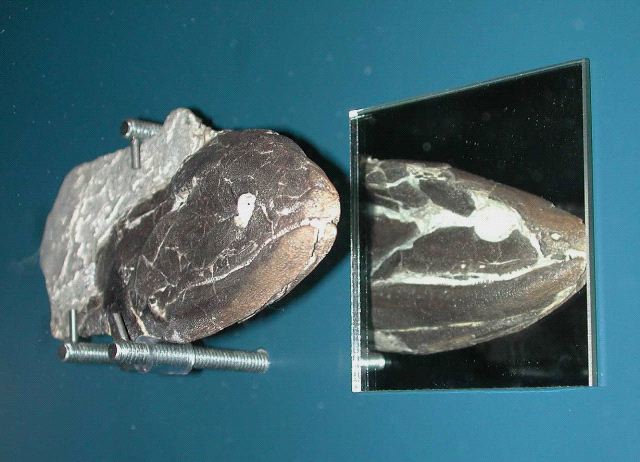A window through time
Time machines only exist in science fiction. Luckily, paleontologists have other useful tools at their disposal to explore the past.
 (48 kb) These tools are fossil sites, virtual windows in time through which we may peer at ecosystems that vanished a long time ago.
(48 kb) These tools are fossil sites, virtual windows in time through which we may peer at ecosystems that vanished a long time ago.
Some windows are small and grimy. For a number of reasons, such as inadequate preservation, scarcity of specimens, fossil fragmentation or poor representation of species, they offer only a limited view of ancient ecosystems. Other windows are a little bigger and clearer, affording a better view. In extremely rare cases, the windows are very large and offer excellent clarity.
These rare fossil sites displaying exceptional preservation bear the name Lagerstätte, a German word meaning “place of deposition”. The Escuminac Formation includes several layers worthy of the title Lagerstätte due to the abundance of specimens and high quality of preservation, and also the immense insight they have provided into pivotal stages in the evolution of life and the Devonian world in general.
For these reasons, the Miguasha site is celebrated as an extraordinary window in time, opened wide to reveal life as it was during the Upper Devonian.

 (48 kb) These tools are fossil sites, virtual windows in time through which we may peer at ecosystems that vanished a long time ago.
(48 kb) These tools are fossil sites, virtual windows in time through which we may peer at ecosystems that vanished a long time ago.Some windows are small and grimy. For a number of reasons, such as inadequate preservation, scarcity of specimens, fossil fragmentation or poor representation of species, they offer only a limited view of ancient ecosystems. Other windows are a little bigger and clearer, affording a better view. In extremely rare cases, the windows are very large and offer excellent clarity.
These rare fossil sites displaying exceptional preservation bear the name Lagerstätte, a German word meaning “place of deposition”. The Escuminac Formation includes several layers worthy of the title Lagerstätte due to the abundance of specimens and high quality of preservation, and also the immense insight they have provided into pivotal stages in the evolution of life and the Devonian world in general.
For these reasons, the Miguasha site is celebrated as an extraordinary window in time, opened wide to reveal life as it was during the Upper Devonian.
Site map | Feedback | Links | Sources | Credits
A window through time
<< The animals of Miguasha | Representativity >>

Title: Eusthenopteron foordi
Author: Jean-Pierre Sylvestre
Sources: Parc national de Miguasha
Year: 2003
Description:
It was during the Devonian Period that sarcopterygian fish gave rise to the first terrestrial vertebrates. Eusthenopteron foordi (shown here) was long thought to be the transitional animal between fish and tetrapods, sharing features with both, but recent discoveries have shown that the elpistostegalians are even more closely related to four-legged vertebrates.


